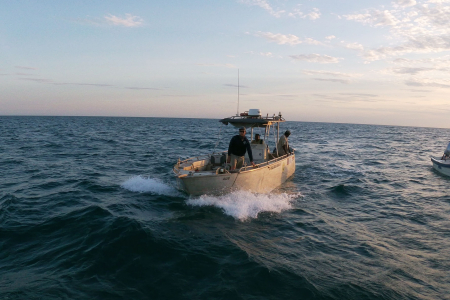News
Seagrass habitats more diverse and expansive than expected; survey reveals
Vital seagrass habitat is more widespread and diverse than previously thought, according to new research that is surveying the habitats across Marra and Yanyuwa sea country.
As a part of the research, the Mabunji li-Anthawirriyarra Land and Sea Rangers are collaborating with scientists from TropWATER at James Cook University (JCU), Northern Institute at Charles Darwin University (CDU), and the NT Parks and Wildlife Commission.
The survey area covers about 2,250km² of the Commonwealth Limmen Marine Park and the Northern Territory’s Limmen Bight Marine Park.
This region is rich with cultural knowledge, but ecological knowledge is limited.
The surveys are using helicopters to map seafloor habitats that are exposed at low tide, and boat-based sampling for deeper waters.
The survey of more than 3,000 sites has revealed that seagrass habitat extends from the shallow water to a depth of 20 metres, and so far, the survey has identified eight seagrass species.
Senior li-Anthawirriyarra sea ranger Shaun Evans said the mapping project was important for setting the foundation for future monitoring.
“We need to know what resources we have and where they are located,” Mr Evans said.
“These habitats support turtle, dugong and fish that are significant to Marra and Yanyuwa people, knowing they are healthy is important for us.
“Projects and partnerships like this support us to work on country which is needed for us to achieve our sea country planning and management goals into the future.”
CDU's Northern Institute researcher Dr Rachel Groom said the study added to the knowledge about migratory and threatened species that relied on these seagrass habitats.
“We are now mapping and describing the seagrass habitats that underpin ecosystem function and are critical habitats for dugong and turtle,” Dr Groom said.
The surveys are being conducted over two weeks using helicopters to map seafloor habitats that are exposed at low tide, and boat-based sampling for deeper waters.
JCU’s TropWATER researcher Dr Alex Carter said the survey required a huge effort from all researchers and ranger groups involved.
“In two weeks, we have surveyed more than 3,000 sites and mapped extensive areas of seagrass,” Dr Carter said.
“Seagrass meadows extend from shallow sandbanks next to mangroves to waters 20m deep at the edge of the marine park, with eight species recorded.”
The integral role that seagrass habitats play in supporting healthy populations of fish, crabs, turtles, and dugongs is well known. These surveys are showing that seagrass habitats in the Gulf of Carpentaria are far more extensive and diverse than previously documented.
This project is jointly funded by Charles Darwin University (CDU), James Cook University (JCU), Mabunji Aboriginal Resource Indigenous Corporation, the Northern Territory Government and the Australian Government under the “Our Marine Parks Grants”, National Environmental Science Program and the Department of Agriculture, Water and Environment.
Related Articles

Mask on or off? Study uncovers effects of face masks on stuttering
Read more about Mask on or off? Study uncovers effects of face masks on stutteringA study by Charles Darwin University has leveraged the unique context of mandatory mask-wearing during the COVID-19 pandemic to explore the relationship between stuttering, anxiety-related safety behaviours, and the challenge of maintaining open communication.

Health monitoring devices at risk of being hacked, study shows
Read more about Health monitoring devices at risk of being hacked, study showsBillions of people around the world are using internet-connected medical devices to monitor their health, but could be putting themselves at risk of hackers using their data for unhealthy reasons according to a new cybersecurity study.

Scholar lends expertise on Mozart mystery in upcoming documentary
Read more about Scholar lends expertise on Mozart mystery in upcoming documentaryWhen Professor Martin Jarvis AO began to learn Mozart’s Violin Concerto No. 2 in D major, his instincts prompted him to question whether the piece was truly composed by one of the greatest figures in the history of Western music.
